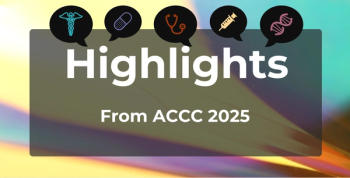
Revised Classification Criteria Needed Due to Melanoma Overdiagnosis
The increasing rate of melanoma diagnosis may not be due to actual disease, the authors of a new study posit; instead, it may be due to overdiagnosis of patients with an actual very low risk of death.
Increasing rates of melanoma diagnosis in recent years may be due to overdiagnosis of the
“Evidence exists that escalating melanoma incidence is due in part to overdiagnosis, the diagnosis of lesions that will not lead to symptoms or death,” the authors underscored. “Although melanoma is the most serious skin cancer, most patients have high chances of survival. There is evidence that some lesions diagnosed as melanoma would never have caused symptoms or death.”
Using data from the Surveillance, Epidemiology, and End Results database, patients for this study were included in analyses if their melanoma was diagnosed in 2010 and 2011, they had negative clinical lymph nodes, and they had early-stage, small lesions. Risk of death was estimated out to 7 years—patients had to have complete 7-year follow-up data—and logistic models identified a subset of patients in this group who may have had a higher risk of death. Of the 11,594 patients in the study, 46% were female patients. Their median (IQR) age was 58 (48-68) years.
“Patients with very‐low risk of dying from melanoma within 7 years of diagnosis were identified,” they concluded. “Such cases warrant further study and consensus discussion to develop classification criteria, with the potential to be categorized using an alternative term such as ‘melanocytic neoplasms of low malignant potential.’”
The median Breslow thickness was 0.45 (0.30-0.65) mm.
The entire patient cohort was divided into a training set (67%) and a testing set (33%), with the testing data “reserved until after the final selection of candidate models developed using the training data.”
The authors developed 4 models—3 being classification and regression tree (CART) models and 1 risk prediction model—to estimate patient outcomes using the training data set:
- Model 1A, a CART model, classified patients by age, and the cutoff was 69 years
- Model 1B was an extension of Model 1A, using a second cutoff of age 43 years
- Model 2, a risk prediction model, used continuous age, sex, Clark level, ulceration, and mitogenicity
- Model 3, another CART model, classified patients by their age (the cutoff was 69 years), Clark level, ulceration, and mitogenicity
“Based on final results,” they wrote, “we focused on Model 1A, 1B, and 2.”
With Model 1A, 35% of patients were classified as having a very low risk of death of 0.58% (95% CI, 0.29%-1.14%); in Model 1B, 25% had a very low mortality risk of 0.40% (95% CI, 0.16%-1.03%); and in Model 2, 25% again had a very low risk, of 0.52% (95% CI, 0.22%-1.20%).
Overall, 2.5% of all patients died because of their melanoma within the 7-year follow-up. This was slightly lower in the training data set, at 2.3%, but slightly higher in the testing data set, at 2.3%.
“The favorable survival estimates we report are comparable to ultra‐thin melanomas with Breslow thickness ≤ 0.5 mm studied previously,” the authors concluded. “Besides physical effects of unwarranted treatment, overdiagnosis can falsely import psychological burden of disease. This retrospective study indicates the need for prospective studies to better characterize melanocytic neoplasms of low malignant potential.”
Reference
Eguchi MM, Elder DE, Barnhill RL, et al. Prognostic modeling of cutaneous melanoma stage I patients using cancer registry data identifies subsets with very-low melanoma mortality. Cancer. Published online November 7, 2022. doi:10.1002/cncr.34490
Newsletter
Stay ahead of policy, cost, and value—subscribe to AJMC for expert insights at the intersection of clinical care and health economics.












































